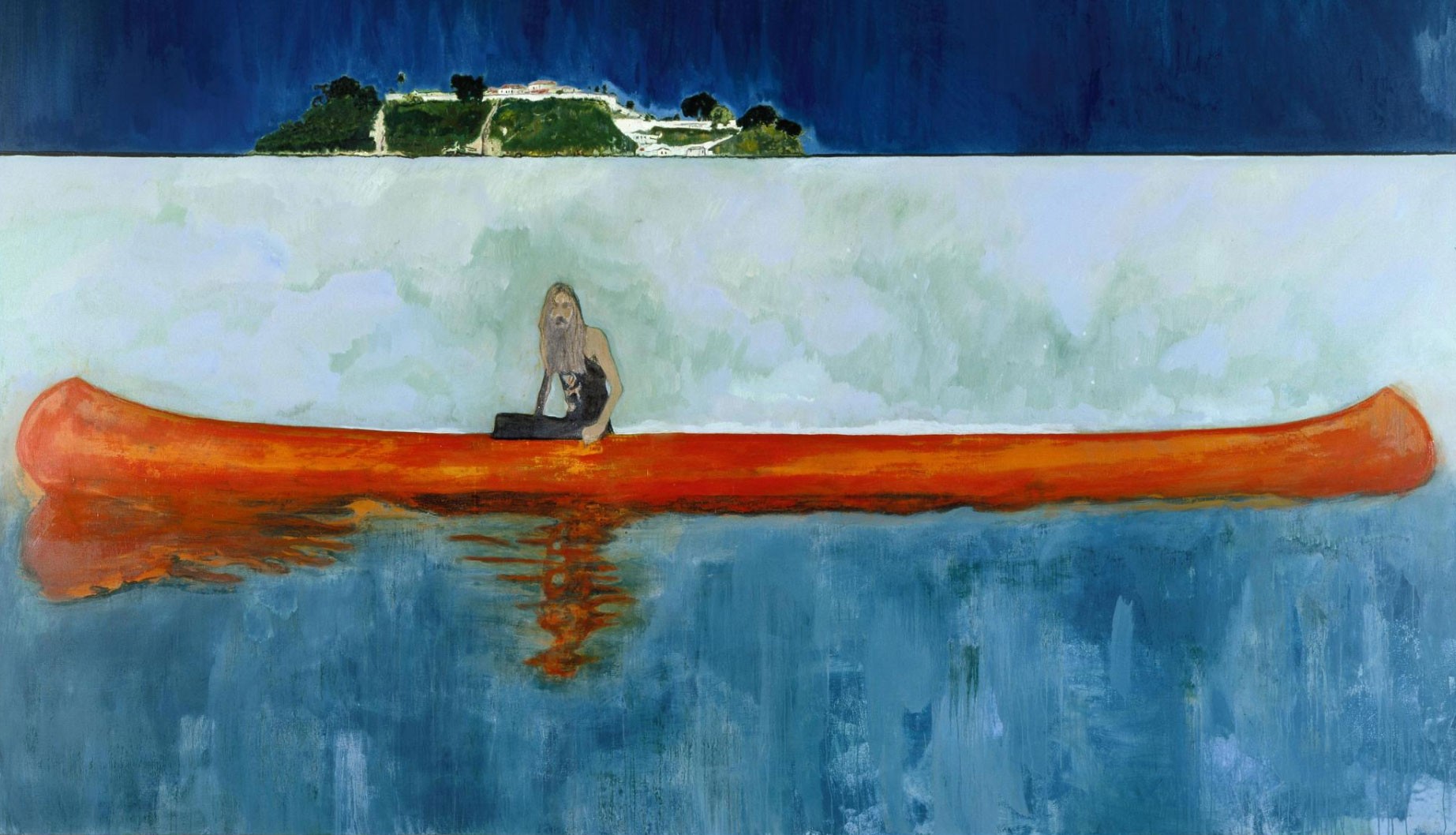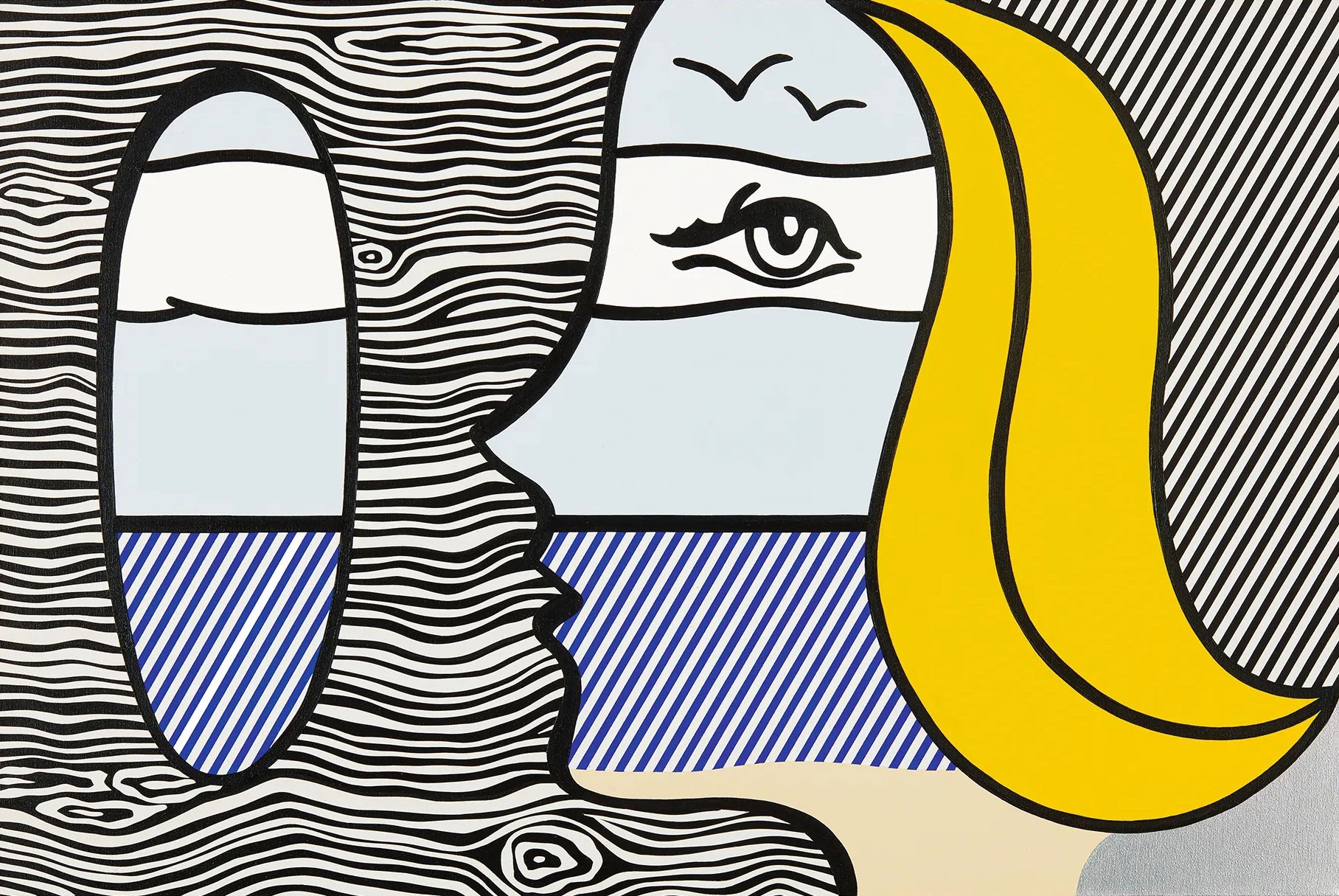
Plein Sud : What was the starting point for this exhibition?
Jean-Marie Gallais : It's truly an insular experience. The geographical location of the Fondation Carmignac is unlike any other museum in the world. Porquerolles is not a deserted or lost island. You can still make out the mainland. At the same time, life here is very different. The sounds and smells are different. Cars are absent and nature is omnipresent. You feel a kind of slowing down. The starting point for the exhibition is this small gap with what seems to be reality, everyday life. It's a pretty accurate metaphor for artistic creation. We've tried to showcase this singular perception through a selection of works.
PS : What role does the island of Porquerolles play in these works?
JMG : I did some research to find out which artists had been to Porquerolles. We are showing paintings from the late 19th century by Jean-Francis Auburtin and Henri-Edmond Cross. The latter's masterpiece, Les Îles d'or, now at Orsay, returns for the first time to the place where it was painted. We also present photographs by Bernard Plossu, taken in the 1960s. These works, which open the exhibition, maintain a link with the outside world. Tony Matelli's little flower, which grows inside the first room, gives the impression that the botanical garden, visible through the bay windows, seems to be entering the house. A painting by Roy Lichtenstein, depicting the sea and a woman's face, also blurs the boundaries. In 2023, artist Giulia Andreani reproduced one of the island's earliest postcards in watercolour, using Payne grey. This shade was invented in the 18th century to approximate the cast shadows of dusk and dawn. The fragility of nature is evoked on this floor. A staircase leads down to the invisible part of the museum, dug entirely out of the ground. This underground space reveals worlds more detached from reality.
PS : In this way, you invite the visitor to enjoy a truly sensitive, physical and mental experience.
JMG : The Carmignac Foundation is based on the principle of living art as an experience. This is reflected in a number of rituals. At the entrance, visitors are offered thyme tea or morning dew water, and are invited to take off their shoes to muffle the sounds in the spaces. The size of the audience is also limited, to ensure close proximity to the works. I've extended this intimate relationship into the hanging. With the scenographer, for example, we worked with natural light. In fact, the Porquerolles sun appears in a video in the form of a tableau vivant by Jennifer Douzenel. In this way, I've tried to remind visitors of little sensations they may have experienced while strolling around the island. Camille Henrot's Ikebana may evoke the creation by children of a small driftwood tepee found on the beach at Courtade, just below. This work, which deals with the cosmos, takes us both to far-flung, imaginary worlds and, at the same time, to something very simple.
PS : What outstanding works mark this immersion?
JMG : As we descend into the basement, we come face to face with a bearded figure. He's looking at us from the side, sitting on a canoe. This painting, entitled One Hundred Years Ago, is by Peter Doig, one of the world's greatest contemporary painters. Many of the works in the exhibition play on the notion of time. This unfathomable, alien-looking figure floats in the middle of a surprisingly calm sea. A kind of confusion sets in. The scene resembles something familiar, but also exudes a kind of disquieting strangeness, to use Freud's term. That's the magic of this painting.
At the center of the exhibition, one work is the result of an artistic collaboration with... termite colonies. Agnieszka Kurant fed colored sands to the insects, who fashioned mounds of purple, pink, green, blue or red. These termite mounds are like inner islands, unfathomable and fragile. These sculptures, the fruit of human and insect labor, raise questions about the future of art. A little further on, Nigerian artist Otobong Nkanga has created a 6 m-long tapestry that plunges us into an underwater universe. Fragments of bodies that have fallen to the bottom of the sea are undergoing metamorphosis. The head of a humanoid becomes a large coral. Otobong Nkanga evokes the links between living worlds.
PS : How do you want visitors to feel when they leave?
JMG : The exhibition follows a kind of dramaturgy. Before exiting, visitors pass through the deafening din of Bruce Nauman's surrealist fountain, composed of a hundred fish spitting water. Then he passes through a kind of cocoon. German artist Pia Krajewski has covered the walls with a carpet imagined as the flesh of an abstract fruit. Finally, he rises to the surface, wanders through the gardens and encounters other sculptures. It's a gradual return to reality. At the end of this experience, I hope we'll pay different attention to the details of nature, which can be a source of poetry. A bird call, a plant that looks like a sculpture can become the beginning of a story. The coefficient of fiction contained in reality is multiplied. It's a form of re-enchantment. I designed this exhibition with an audience in mind, one not necessarily accustomed to visiting art venues. I wanted to arouse curiosity and play on surprise effects. I imagined an itinerary that I would have liked to discover as a teenager, even though I had originally come for the beach.

The Inner island, Fondation Carmignac, Porquerolles → 05.11.23